 Under Construction!
Under Construction!
Fieldtrip to Abalone Cove, Palos Verdes, Los Angeles Co., CA, February 26, 2010
See also: S10a, S09b, S09a, Dec. '08, S08b, S08a, S06, S05, S03, F02, S02
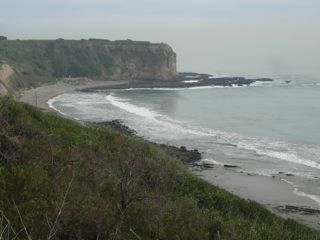
Abalone Cove Ecological Reserve
| 
My grad student, Candice, and friend Brenna from Santa Cruz happened to visit here as well.
| 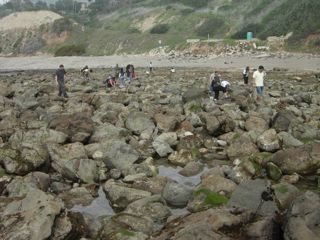
A -1.2 ft. tide when we arrived.
|

-
| 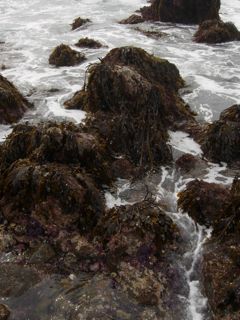
-
| 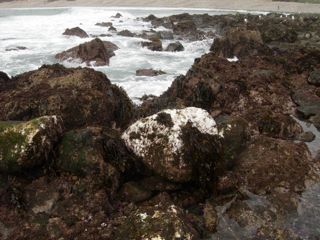
-
|

Most, but not all, of the Egregia menziesii was closely cropped, typical of winter surf and grazer damage.
| 
-
| 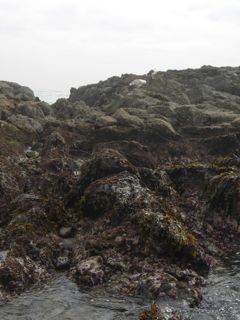
-
|
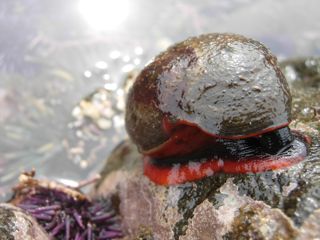
A Norris's top snail (Norrisia norrisii) was crawling across a rock.
| 
-
| 
-
|

I did find limpets grazing those E. menziesii stipes that were longer than others. This one is Lottia pelta (southern).
| 
A smaller L. pelta (southern)
| 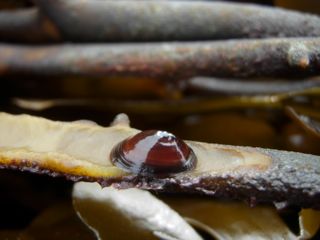
Lottia insessa is a specialist grazer on E. menziesii. Note the lack of radial riblets and a hooked apex, plus the black mantle pigment is visible through the partly translucent shell.
|
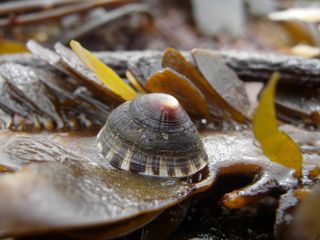
Lottia pelta (southern)
| 
Lottia insessa
| 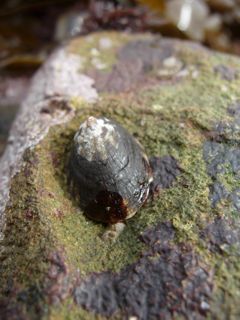
Lottia pelta (southern) on rocks near E. menziesii
|
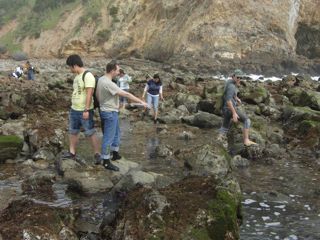
-
| 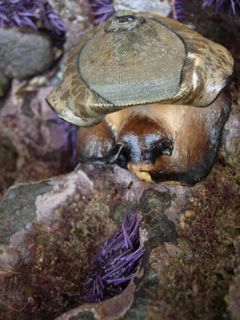
Giant keyhole limpet (Megathura crenulata) stranded by the low tide.
| 
Chestnut cowrie
|
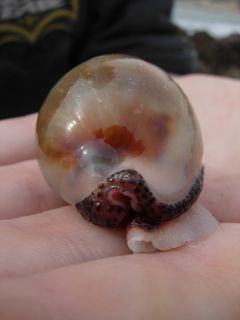
-
| 
-
| 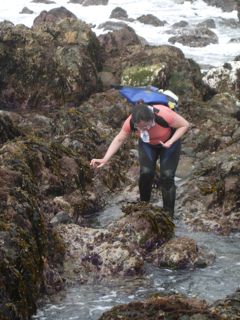
-
|
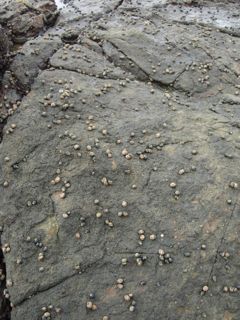
Littorina keenae (mostly) in splash zone on the most exposed headland
| 
L. keenae
| 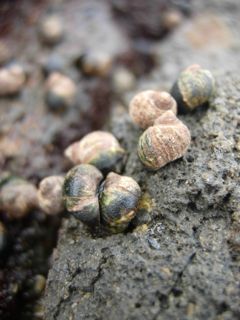
-
|
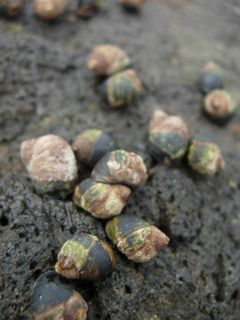
-
| 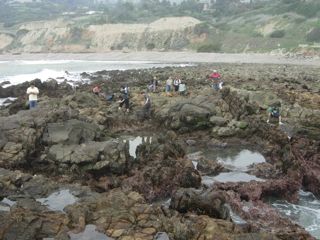
-
| 
Exposed low to mid zone
|
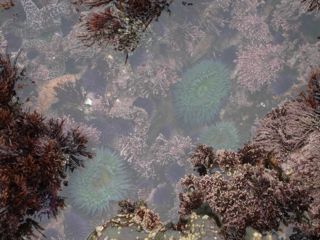
Giant green anemones (Anthopleura xanthogrammica) such as these are rare in the southern California intertidal, but are common north of Pt. Conception. Its presence here is likely related to the exposure and possibly relatively cool water upwelling on this headland, also protected from sand or cobble scour on this steep exposed shore.
| 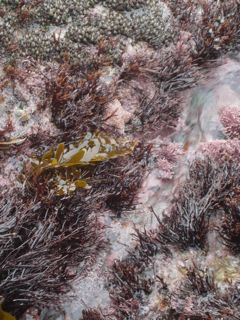
Surge channels had abundant recently settled gooseneck barnacles and fleshy red alga (compare ? Prionitis), both likely competing with coralline turf facilitated by limpet, chiton, and urchin grazing.
| 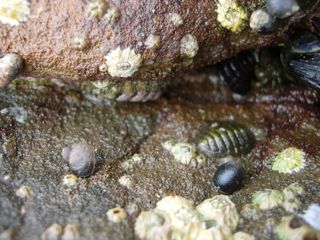
Cyanoplax hartwegii on right; Nuttallina fluxa on side of rock.
|

We barely missed a major storm, moving in to southern California later this night (and it had already forced postponement our planned overnight camping trip to Cambria in central CA).
| 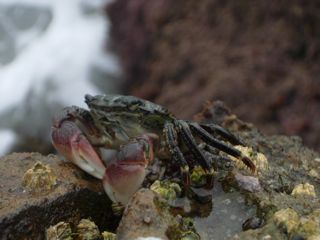
Pachygrapsus crassipes
| 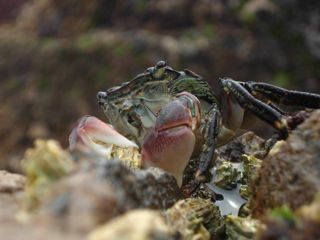
-
|
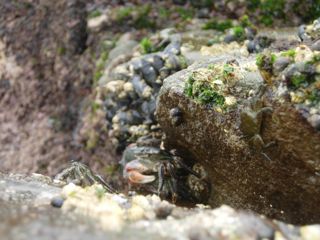
-
| 
-
| 
There were at least seven P. crassipes together having some serious discussion.
|
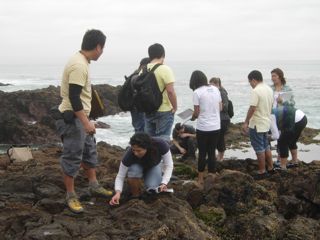
-
| 
-
| 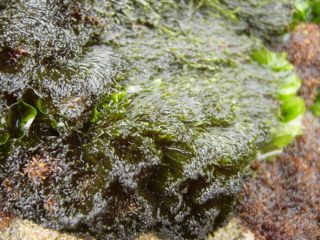
An unidentified green alga
|
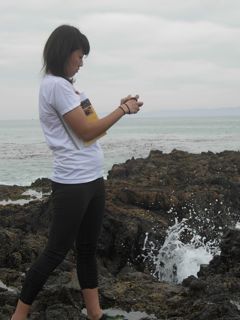
-
| 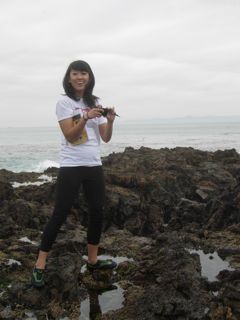
-
| 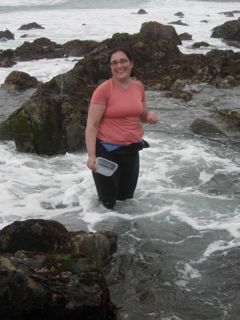
-
|
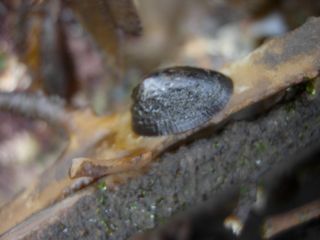
Lottia pelta (southern) on Egregia menziesii
| 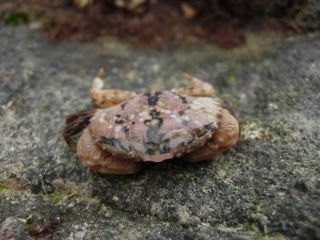
Lophopanopeus leucomanus
(knobkneed crestleg crab)
| 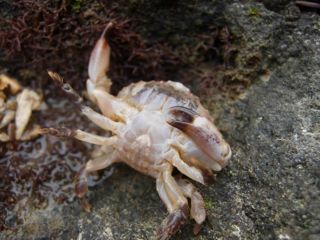
A male (narrow abdomen)
|

-
| 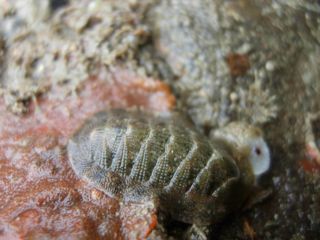
Lepidozona pectinulata on underside of rock
| 
A pair of pycnogonids, with the lower of the two apparently a male brooding embryos, as males take care of offspring in this group of sea spiders. Compare Pycnogonum stearnsi.
|

Patiria miniata (batstar) juvenile
| 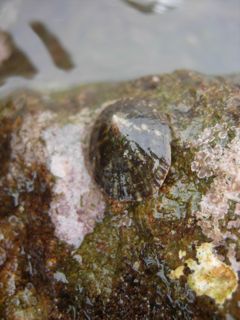
Lottia pelta (southern)
| 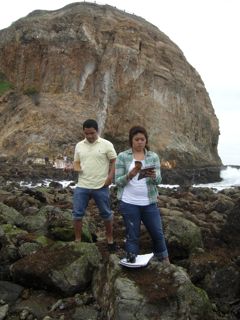
-
|
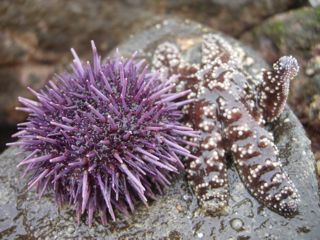
Strongylocentrotus purpuratus and Pisaster ochraceus (juvenile)
| 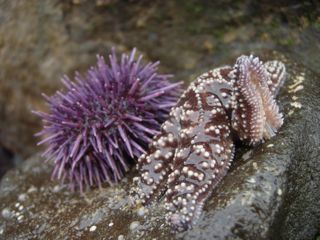
-
| 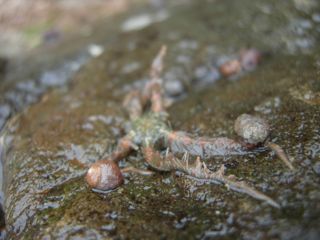
Spiny brittle star, Ophiothrix spiculata
|
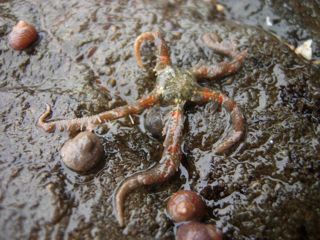
-
| 
-
| 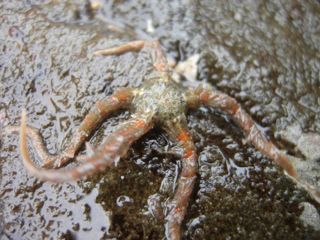
-
|

Two brittle stars of different sizes, O. spiculata
| 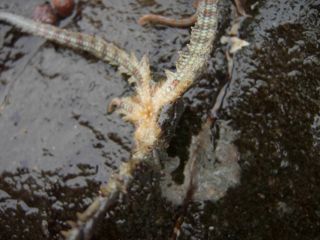
-
| 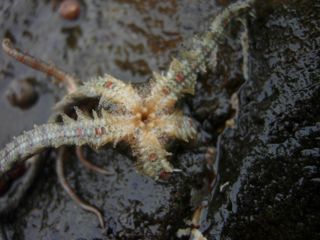
This brittle star was regenerating two arms, which were quite flexible and functional for flipping over.
|

Tentative: dwarf brittle star, Amphipholis squamata, or possibly juvenile O. annulata. Specialists have long suspected A. squamata, abrooding hermaphriditic brittle star, to be a species complex along the West Coast.
| 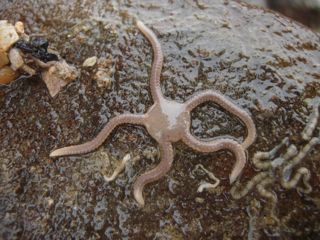
The smooth brittle star, Ophioplocus esmarki
| 
-
|
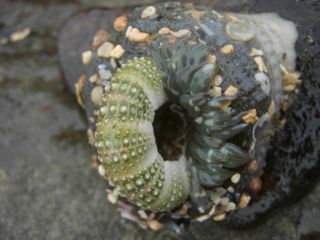
Anthopleura sola with a mouthful of purple urchin test.
| 
Compare banded brittle star, Ophionereis annulata
| 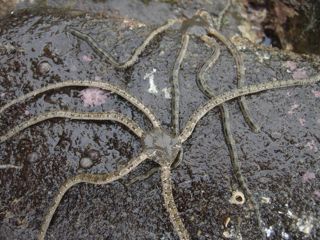
-
|

Oral side of O. annulata
| 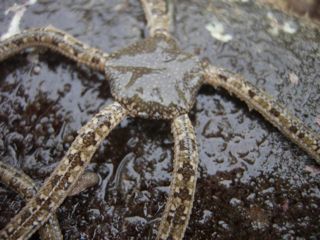
Aboral side
| 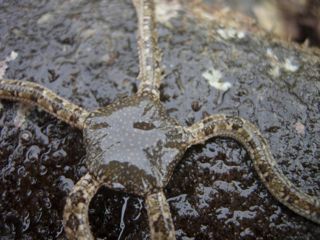
-
|

Brenna is an outstanding marine life photographer - for example, see her sea slugs and chitons
| 
-
| 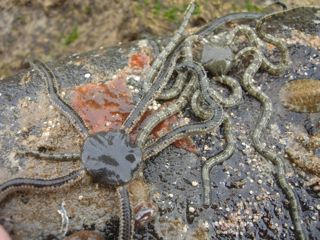
Tentative: Panamanian brittle star (Ophioderma panamense) in front in front of Ophionereis annulata
|

Very similar potentially convergent appearing oral coloration, or else the larger star is just a large O. annulata, or else…?
| 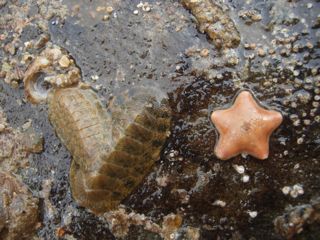
Lepidozona pectinulata and Patiria miniata (juvenile)
| 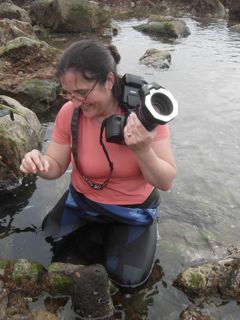
-
|

-
| 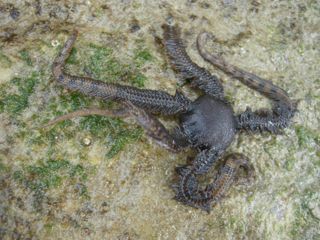
Tentative: Ophiopterus papillosa. Please note that brittle star IDs on this page need to be checked with available literature.
| 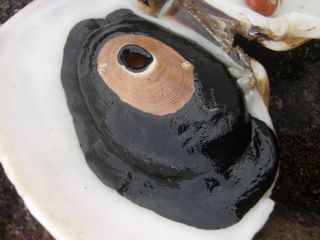
Giant keyhole limpet (Megathura crenulata) juvenile
|

-
| 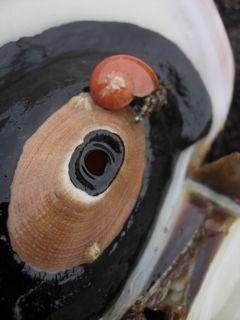
-
| 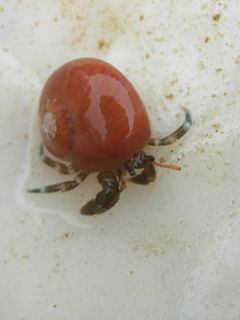
Pagurus hirsutiusculus
|
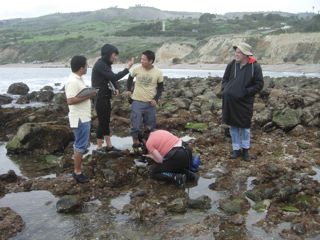
-
| 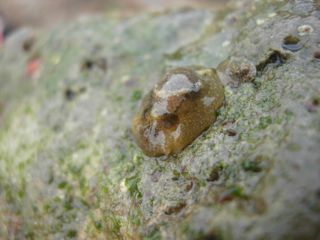
The green bubble snail (Haminoea virescens) is a cephalaspid opisthobranch.
| 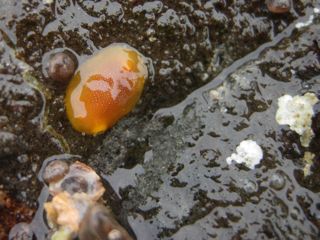
Compare white-spotted dorid, Doriopsilla albopunctata
|

Flatworm
| 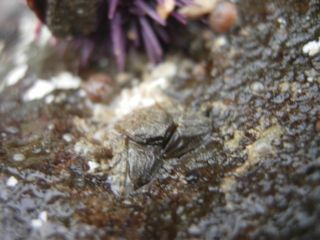
Porcelain crab (compare Petrolisthes cinctipes)
| 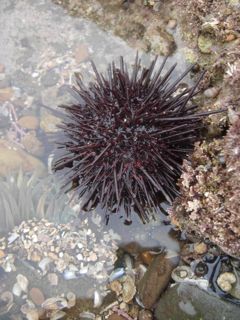
Red urchin (Strongylocentrotus franciscanus)
|

Norrisia norrisi (Norris's top snail) juvenile
| 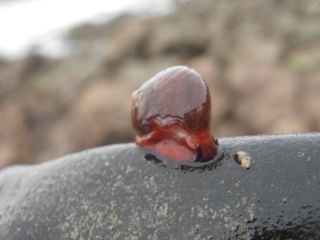
-
| 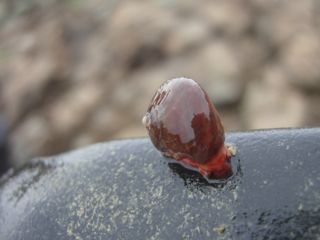
-
|

Leptochiton rugatus with its girdle arranged in a typical "angelic" orientation, probably having to do with its respiratory activities.
| 
Compare Heptacarpus sitchensis (Sitka coastal shrimp)
| 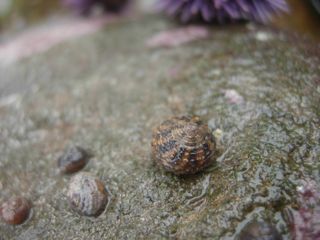
Compare Homalopoma carpenteri (dark dwarf turban)
|
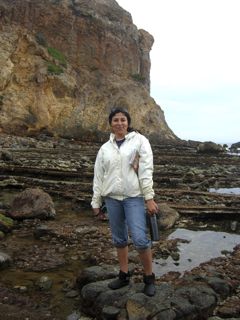
Candice is studying the phylogeography of the volcano keyhole limpet, Fissurella volcano, in my lab.
| 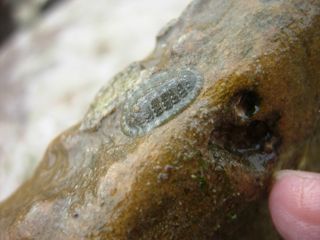
Cyanoplax keepiana (Keep's chiton)
| 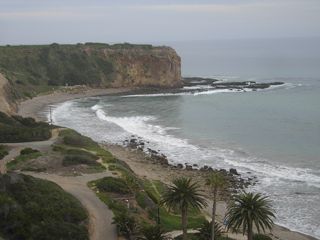
Some people I talked with at this vantage point had just seen a grey whale passing by.
|
See also: S10a, S09b, S09a, Dec. '08, S08b, S08a, S06, S05, S03, F02, S02
Return to Biology 317 Fieldtrip Map or Bio 317 Field Marine Biology Home Page
Web page created on 2/27/10 using ShoresToWeb HyperCard stack by D. J. Eernisse © 2005-2009
 Under Construction!
Under Construction! Under Construction!
Under Construction!